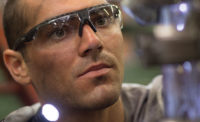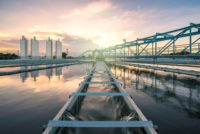Water may be the staff of life, but any amount of water — from a few drips to heavy downpours — can do damage if it gets into the wrong place at the wrong time. If you’re managing safety in your facility, you’ve experienced this firsthand. No workplace is immune to the threat of water hazards. Sometimes they’re weather-related issues, such as a leaky roof, wet entrance or rising water at the loading dock. Other times they’re an operational problem, such as ruptured pipes, toilet overflows or equipment condensation. Most of these water events can’t be avoided, but a clear assessment of the risks at your facility and the right tools in your water preparedness plan can significantly improve your response in both quality and efficiency.
The fallout from water damage extends far beyond the expense of repairs, although that can be significant. The stakes are high when water is an issue.
Insurance claims
Water damage is the second most common business insurance claim, with an average cost per claim of $17,000. Slip and fall accidents, many of which are water-related, come in at #5 with a cost per claim of $20,000.**
Budget busters
Not all water damage will be covered by insurance. From structural damage to equipment malfunction to lost inventory, an uncontrolled water event can add up to high costs for repairs and replacements.
Extra man hours
The labor required to respond to an emerging weather event, to improvise solutions on the spot, to clean up and to make repairs in the aftermath can be significant.
Downtime
A big leak in the wrong place can shut down a production line or displace office workers, resulting in lost productivity.
Cosmetic appearance
It’s more important than ever for facilities to appear clean and safe. Discolored floors, stained ceilings and cracked walls are evident long after a water event is over.
Mold and mildew
Wood, carpet, paper and insulation are targets for mold and mildew when there’s excessive dampness in a facility. Mold can trigger allergic reactions or asthma attacks for employees and require costly remediation specialists for cleanup.
Evaluate your facility
So how can you best mitigate the expense of water damage in your facility? The answer is assessment and preparation. Think of past water events (up to 80% of facilities have experienced one). Are you better prepared if the same thing happened today? Do a site review of your workplace to identify potentially dangerous or problem-prone areas. How many of the issues listed below have you experienced in your facility?
Roof and ceiling leaks
Overhead leaks can be anything from annoying to catastrophic depending on the flow volume and the leak location. Do you have equipment or inventory to protect in the event of a roof leak? Do you have a persistent drip that could turn into a downpour if you’re hit with heavy rains? Do you have brown stained ceiling tiles? Mold? Does the thaw and freeze cycle wreak havoc on your roof?
Entrances and water on floors
Water on the floor can lead to create slip and fall injuries, in part because it’s translucent and difficult to see. Are employees and customers tracking in snowmelt several months each year? Does machinery near your walkways leak or drip persistently? What are you doing to absorb the moisture?
Water intrusion
Points of entry for rainwater intrusion include dock doors, pedestrian doorways, windows and walls. How often do you experience heavy rains? Do you have a plan to block water from entering the building at these entrance points?
Plumbing
Plumbing failures create water issues that range widely in volume and duration. Do you have products to tackle both nuisance leaks and burst pipes?
Leaks and overflows
Air conditioners, water heaters, freezers and refrigerators all have the potential to leak. Toilet and sink overflow. How will you stop the spread before it reaches your walkways?
Condensation
Condensation on pipes, equipment or windows may be a constant issue. Are you experiencing any mold or mildew? How are you absorbing the excess moisture?
Consider the full range of solutions
It’s true that water evaporates, but few workplaces can afford to let nature work its magic. Squeegees and mops can handle the small stuff, but bigger and better solutions are required for the serious issues. The type of products required to achieve a well-rounded water response plan depends on a number of variables.
What is the source of your problems? What’s the volume of water? Where and how frequently are the problems occurring? What’s the speed of the leak? The duration? The answers to these questions determine both the action you should take and the ideal products to fix the issue.
Absorb
Absorbents come in multiple forms and serve different functions. Pads and Mats can pull in large volumes of water. Socks absorb but also stop spills from spreading. Pans, Pillows and SAP absorbents are low-profile to fit in tight spaces and are great for leaks and drips.
Divert
There’s no better solution for high-volume roof leaks than a leak diverter. Diverters catch the water and channel it into a container or drain. Diverters can also channel pipe leaks.
Contain
Utility trays are ideal for leaky liquid container storage for liquid transfers. Portable containment pools can be deployed quickly for emergency response.
Block
Reusable dikes are ideal for confining or channeling water into a desired area or toward a drain. To block rising waters during heavy rains, reusable plastic barriers or absorbent flood bags and barriers can absorb and divert water away from doorways and loading docks.
Clean
Sometimes there’s nothing to do but clean up after a water event. Professional tools like absorbent mats, floor dryers and absorbent mops make cleanup faster and easier.
Implement your plan
The final step in the process is employee training. Make sure your staff knows where the products are and how to use them to ensure you get the most from your new water preparation plan.
**Insurance statistics from The Hartford Small Business Claims Study.



